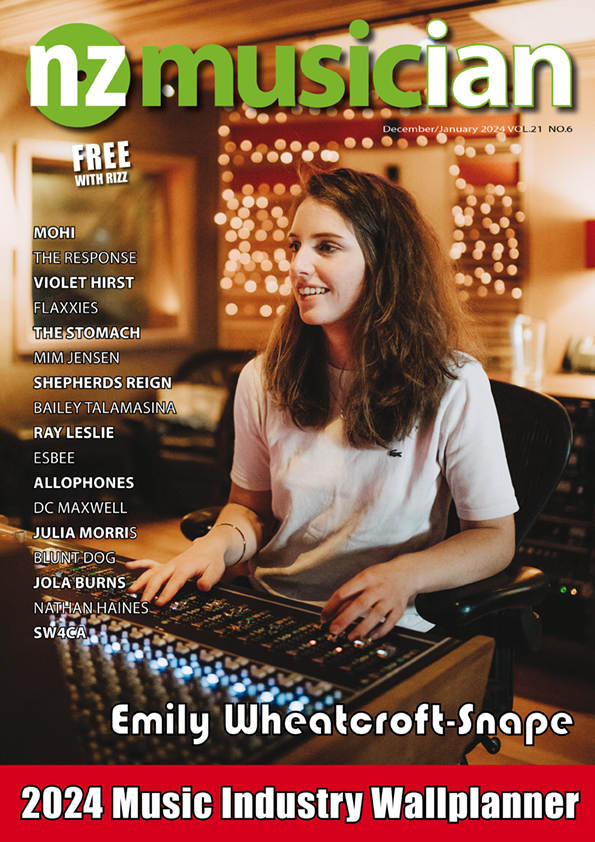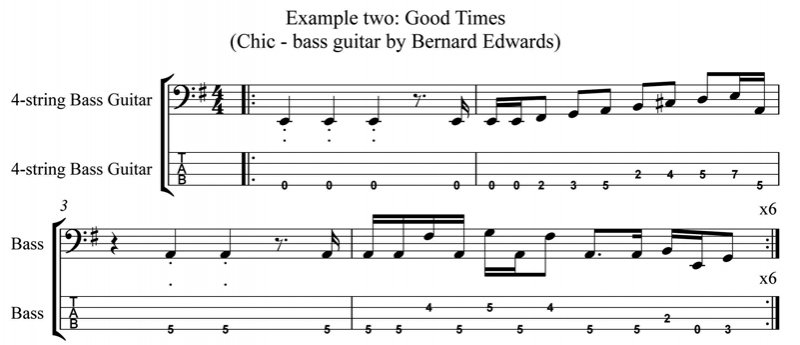Deep Thinking: Bass In Your Face
Deep Thinking: Bass In Your Face
In the last NZM issue, we looked at some iconic Afro-American funk bass lines that used a ‘less is more’ approach. We’ll continue the theme here by looking at two significant bass tracks (one from the 1960s and one from the 1970s) that are perhaps not as funky, but certainly have the drive and fluidity that defines good groove.
The first one is Tears Of A Clown by Smokey Robinson and The Miracles (from 1968 and re-released in 1970), which is one of the Tamla Motown songs for which James Jamerson did not supply the bass part which was instead played by Bob Babbitt. There were around nine Motown bassists (possibly more), but I always avoid that rather contentious debate!
I have transcribed this tune more or less in C major; the actual recording centres around C# in order to make it easier to read. Learn it first and then move it up a fret (a semitone) if you want to play along with the recording. I have included the bassoon part in the opening of the bass line as this was the version I had to play occasionally in the UK – it is a bit scary but it familiarises you with the dusty end of the fingerboard!
The main verse line can be played between frets two and five, with a short stretch by your first fretting finger to play the Bb tied quaver ‘push’ between each two bar phrase. The pre-chorus has a simpler line, while using the same chord changes, before moving into a driving bass chromatic quaver rise for the chorus – G, G# (the major third of E), A and, finally, F. It is a simple verse and pre-chorus chord sequence for guitar or keys – C, F, Bb, F. The quaver-driven chorus chord changes are G, E7, Am7 and F.
Babbitt also recorded for Marvin Gaye, The Temptations, and many others. He used a Fender Precision bass with a piece of sponge pushed under the strings by the bridge to deaden the strings.
The second tune, the one from the 1970s, is Good Times by Chic (in 1979), whose bassist Bernard Edwards was co-composer and producer for the band (along with guitarist, Nile Rogers). Both Edwards and Rogers produced, together and individually, hits for several other artists such as Diana Ross, Carly Simon, Madonna, Rod Stewart and The Power Station. Needless to say, Chic mixes had a ‘bass in your face’effect – which is, of course, the way it should be. Check out his playing on Everybody Dance and Le Freak on Youtube.
The Good Times bass line (which bears a strong similarity to Roxy Music’s Love Is The Drug from 1975) uses the E Dorian/Mixolydian (a little of both in bars 1 and 2)) and notes from the A Mixolydian scale (bars 3 and 4) for its construction. While the guitar plays Em7 to E7sus, the bass has an ascending line from low E through F#, G and A with the important major 6 rising to the b7 – C# to D – before moving up to E an octave higher.
It then moves down to A on a semiquaver (1/16 note) push for the next two bar phrase. This phrase has the guitar playing Asus4 to A6 (A Mixolydian by the way is A, B, C#, D, E, F#, G, A, although this bass line only uses low A and the higher F# and G – see the tablature). This four bar sequence is repeated six times before changing slightly for the verse line, which has similar guitar chords.
The bass line from Good Times was used by the Sugar Hill Gang for Rappers Delight (1979) – used illegally at first but eventually sorted out by record company lawyers. John Deacon of Queen said it was an inspiration for Another One Bites The Dust released in 1980. Grandmaster Flash would sometimes use a mix of both tracks in his performances. Chic’s Bernard Edwards mostly used a Music Man Stingray bass.
In the next issue, I will transcribe some James Jamerson, whose use of chromaticism on Motown records was an influence for bass players before and after his early demise in 1983.
Dr. Rob Burns is an Associate Professor in Music at the University of Otago in Dunedin. As a former professional studio bassist in the UK, he performed and recorded with David Gilmour, Pete Townsend, Jerry Donahue, Isaac Hayes, Sam and Dave, James Burton, Ian Paice and Jon Lord, Eric Burdon and members of Abba. He played on the soundtracks of many UK television shows, such as Red Dwarf, Mr. Bean, Blackadder, Not the Nine OClock News and Alas Smith and Jones. Rob is currently a member of Dunedin bands Subject2change and The Verlaines.


